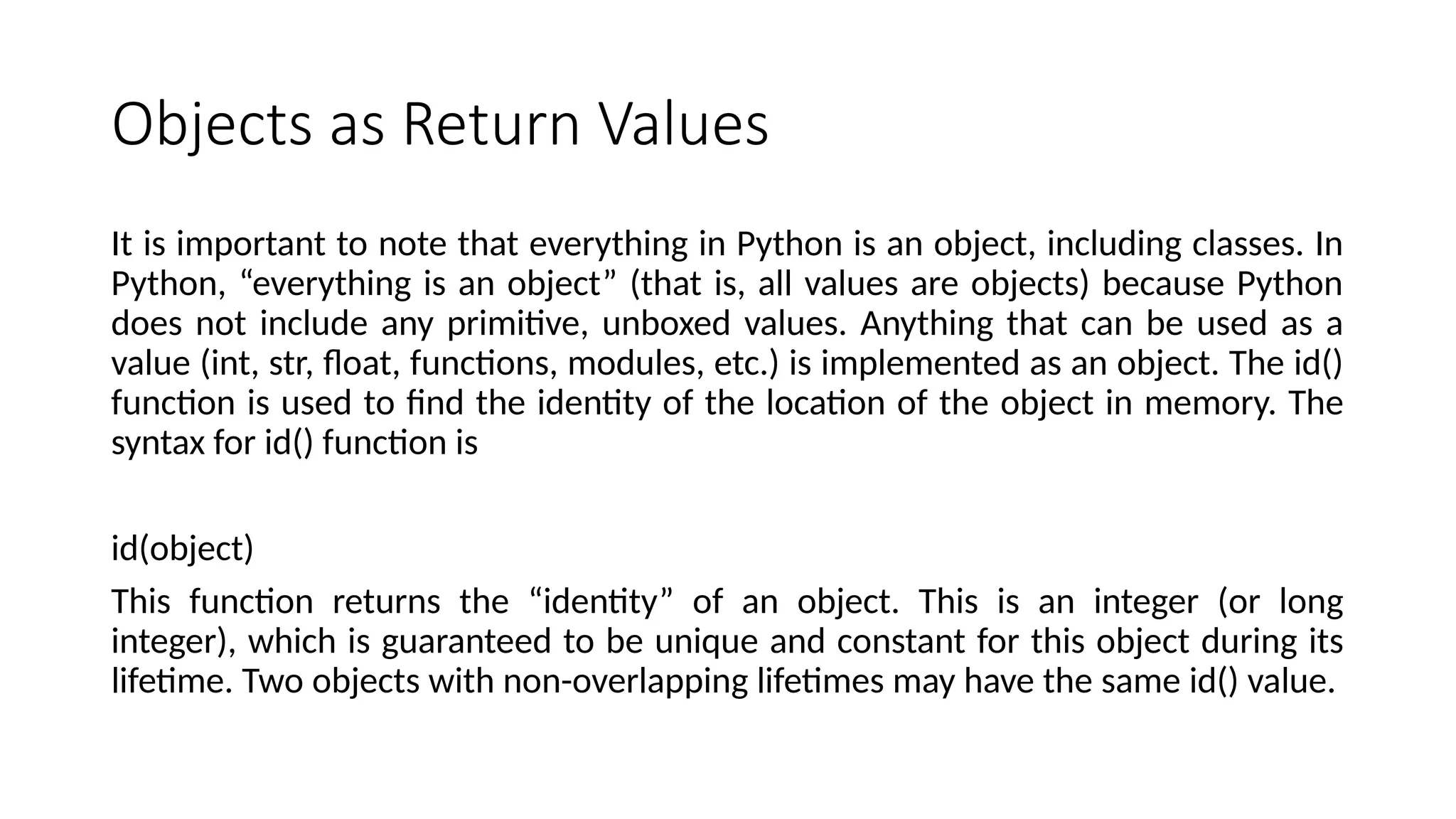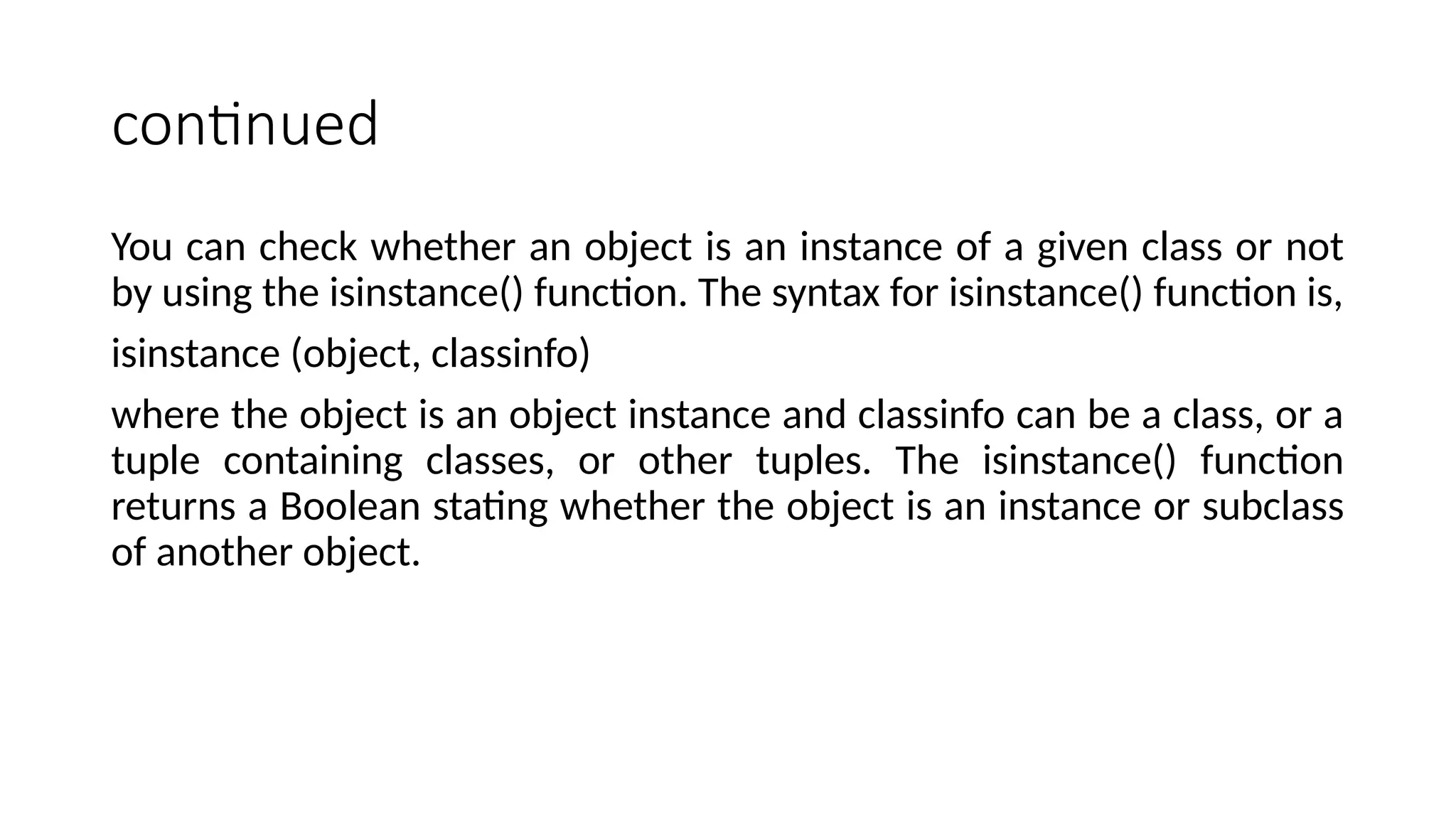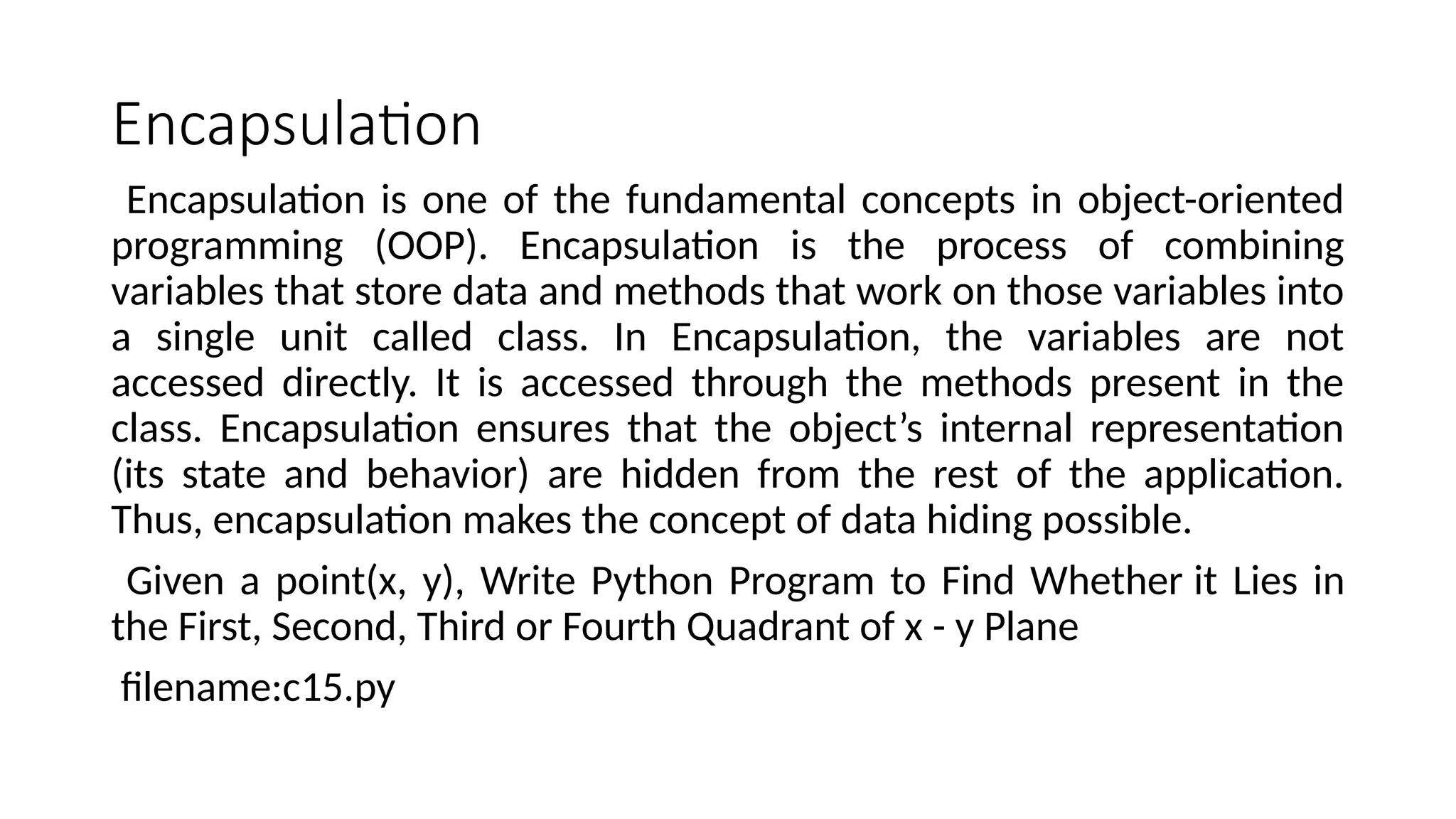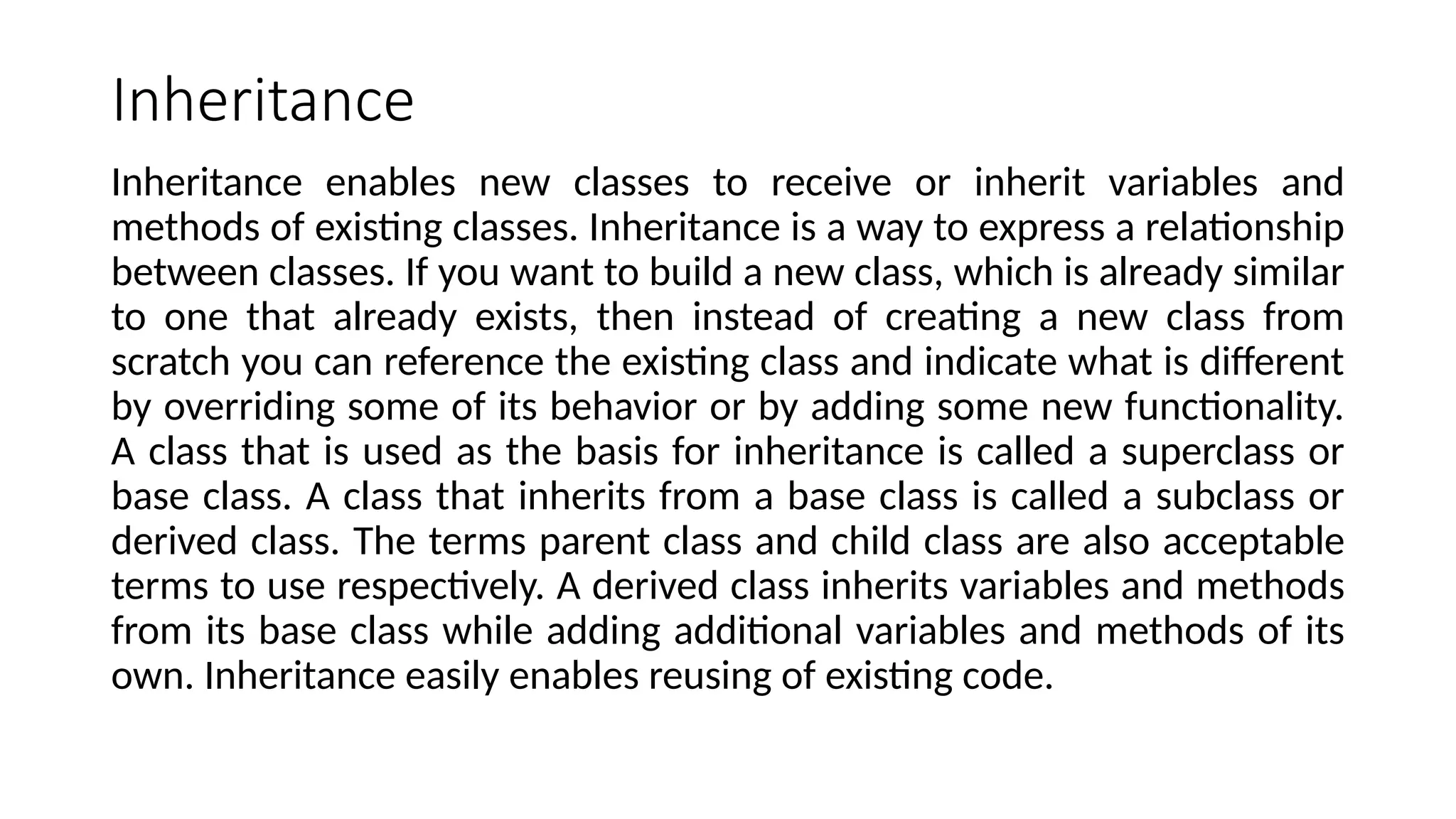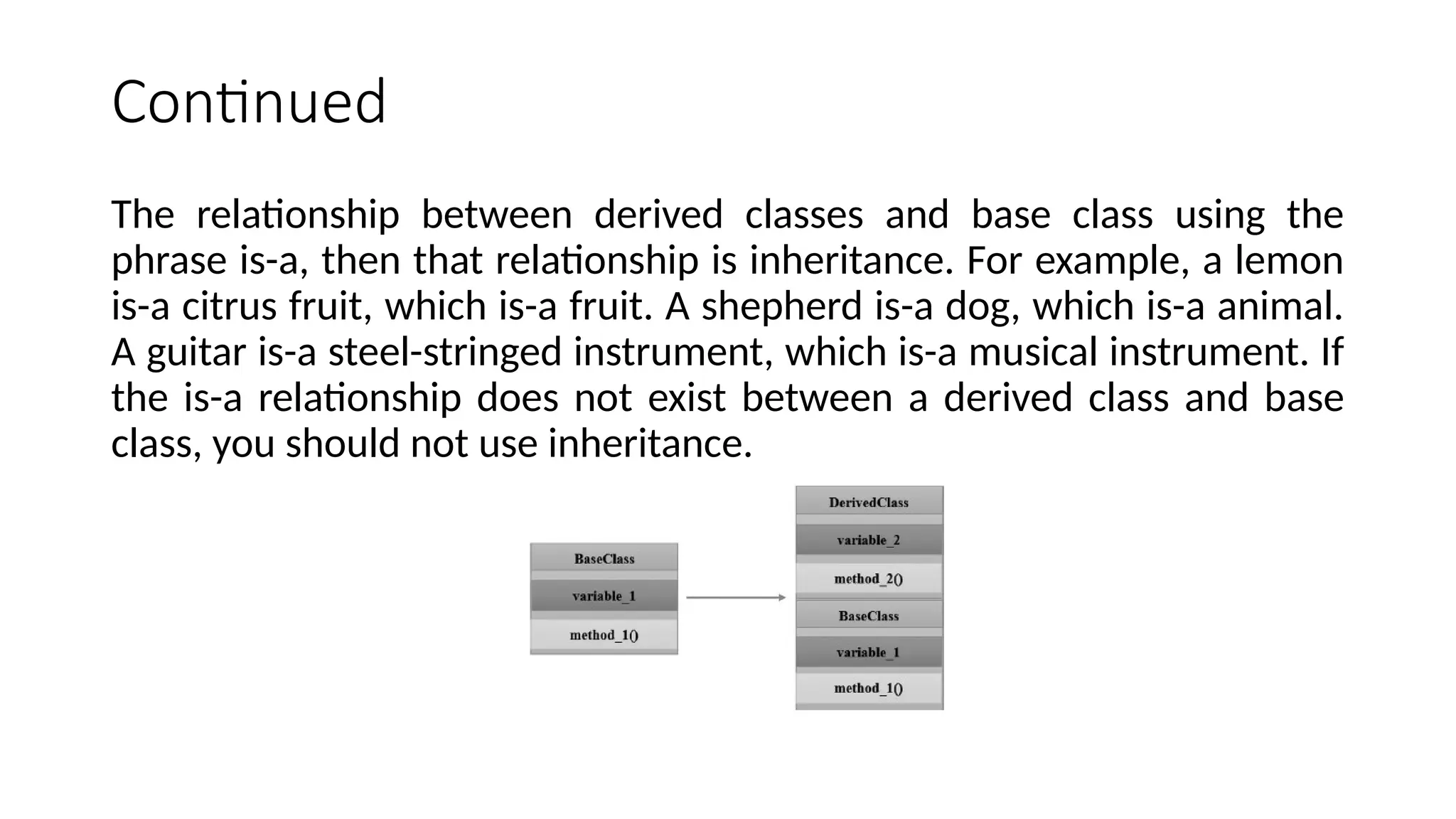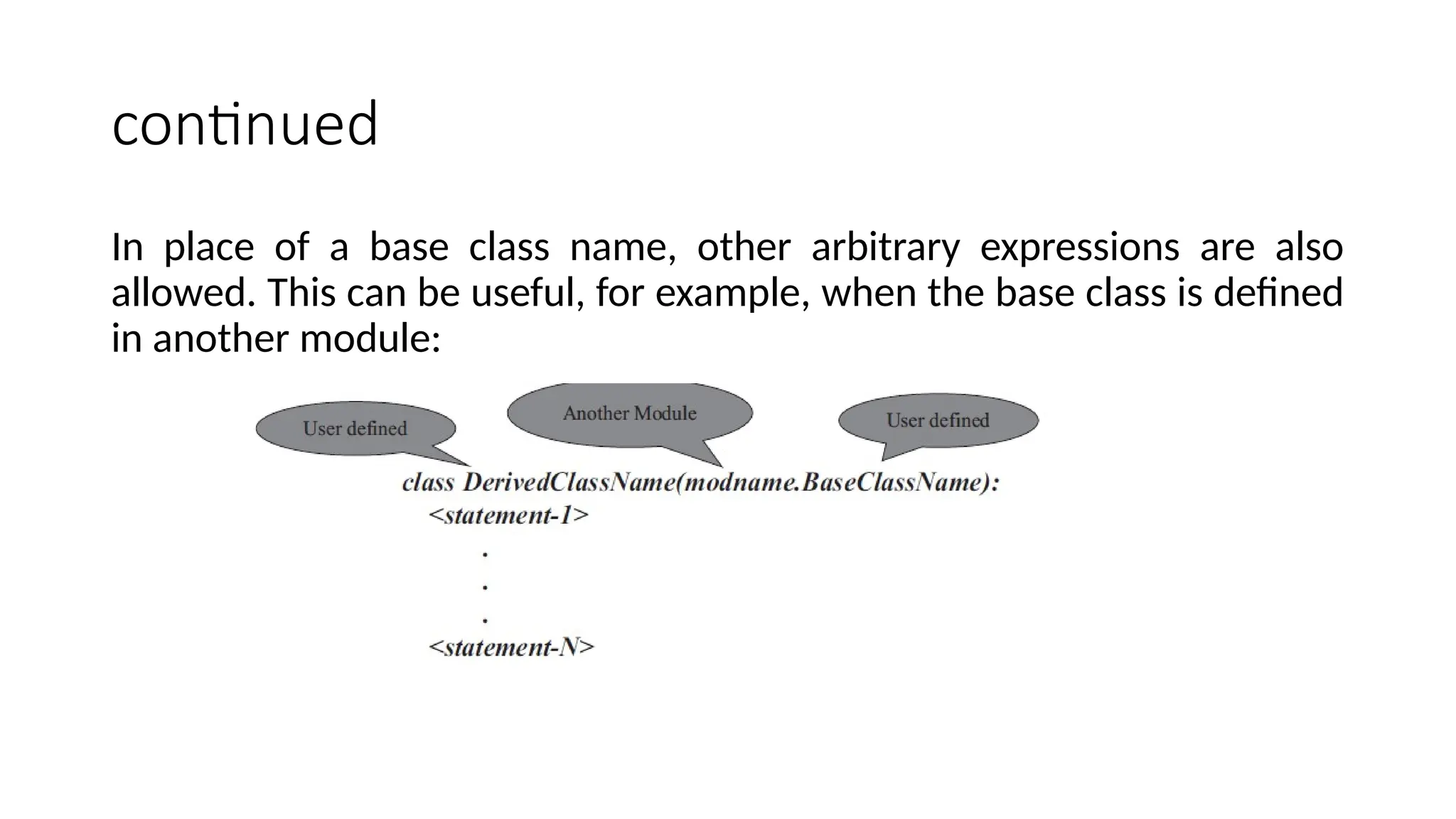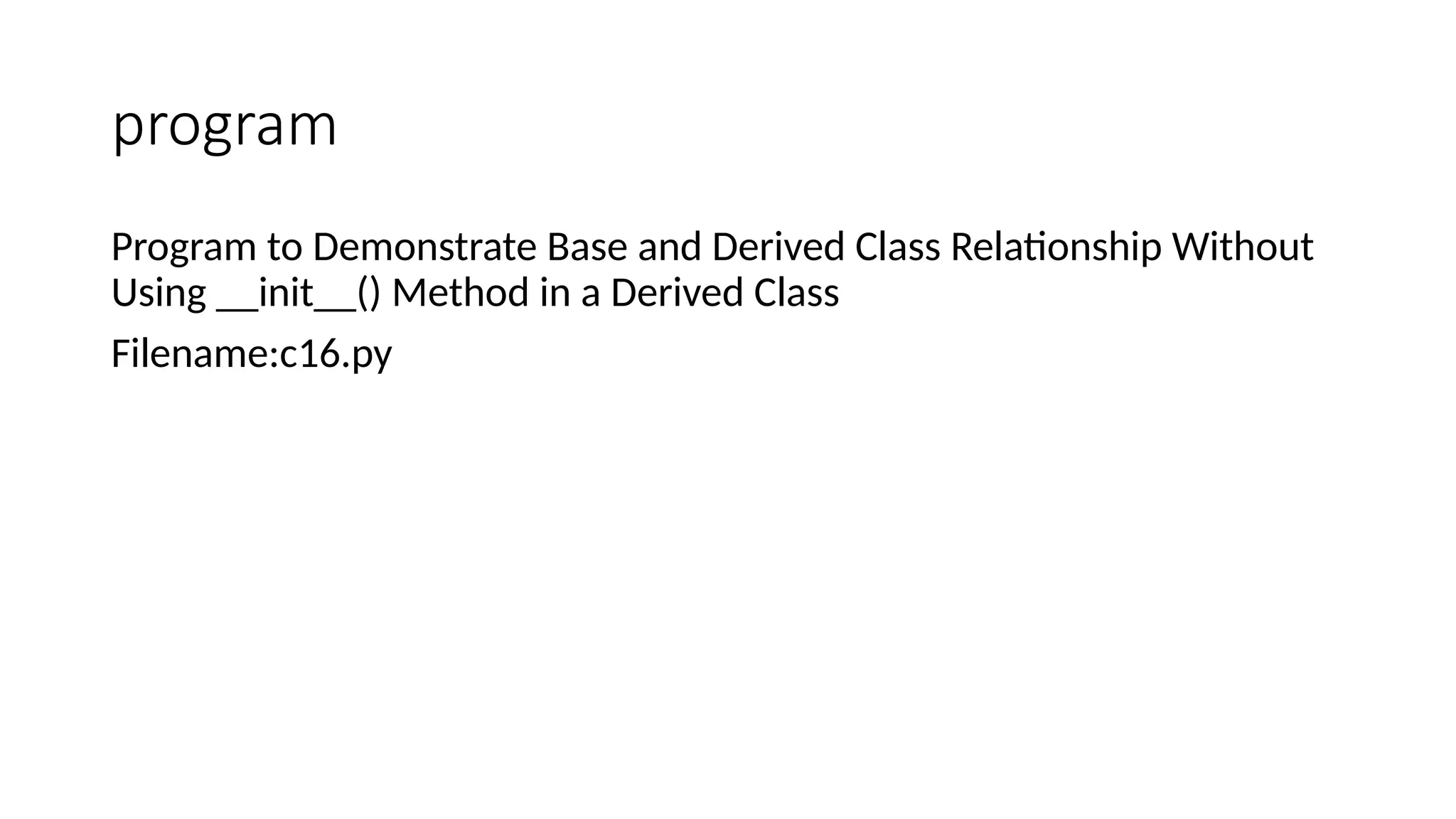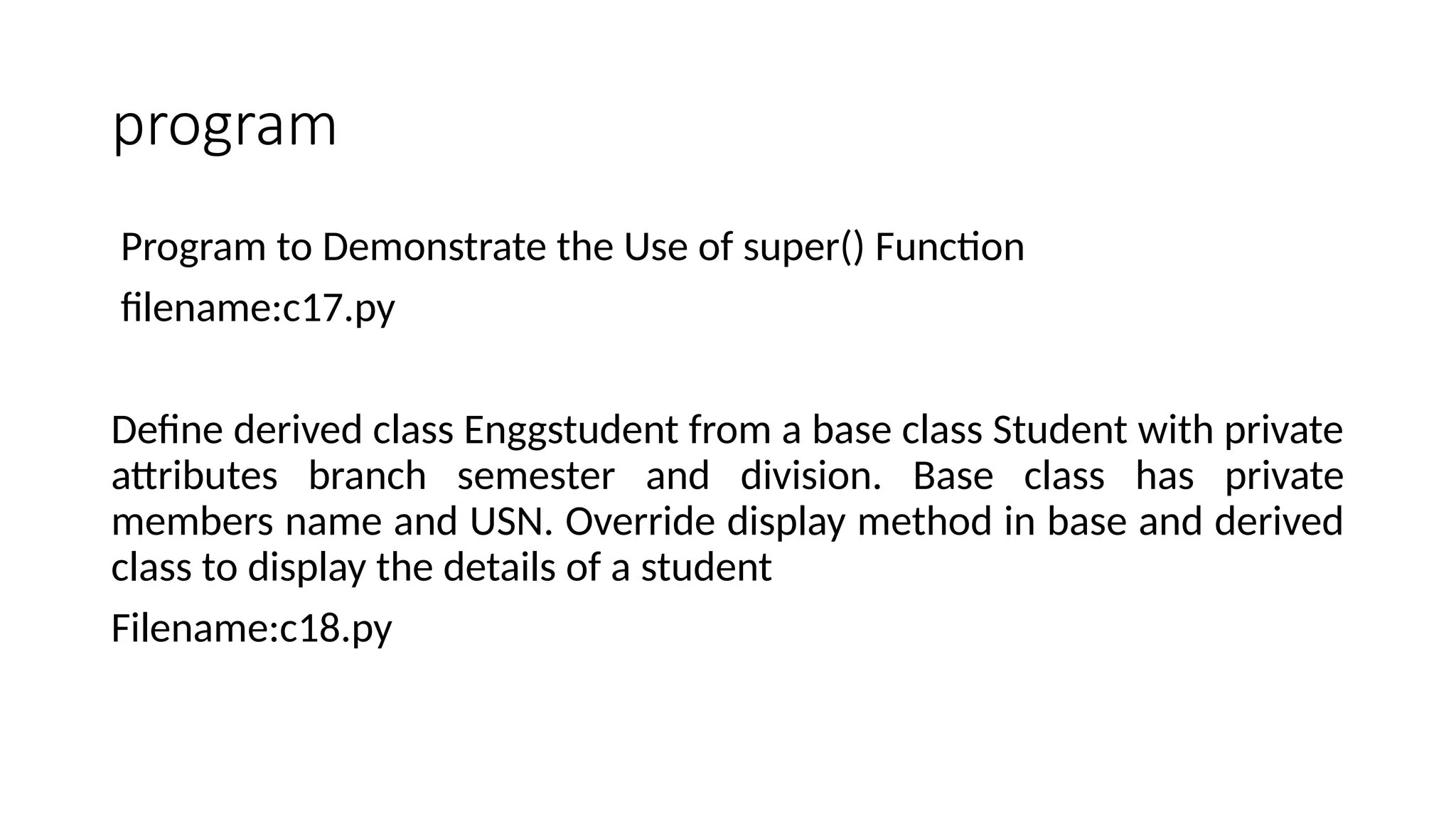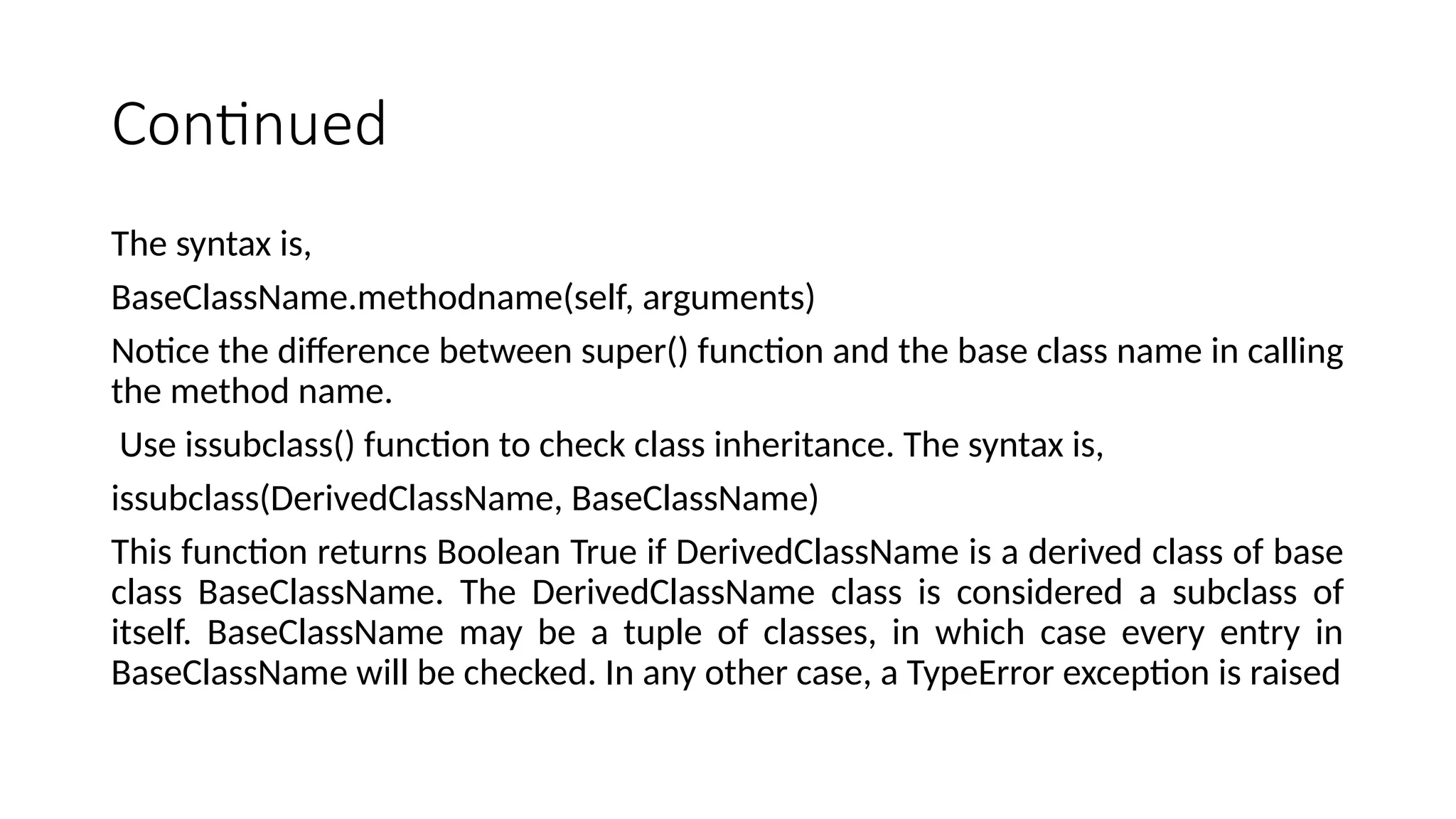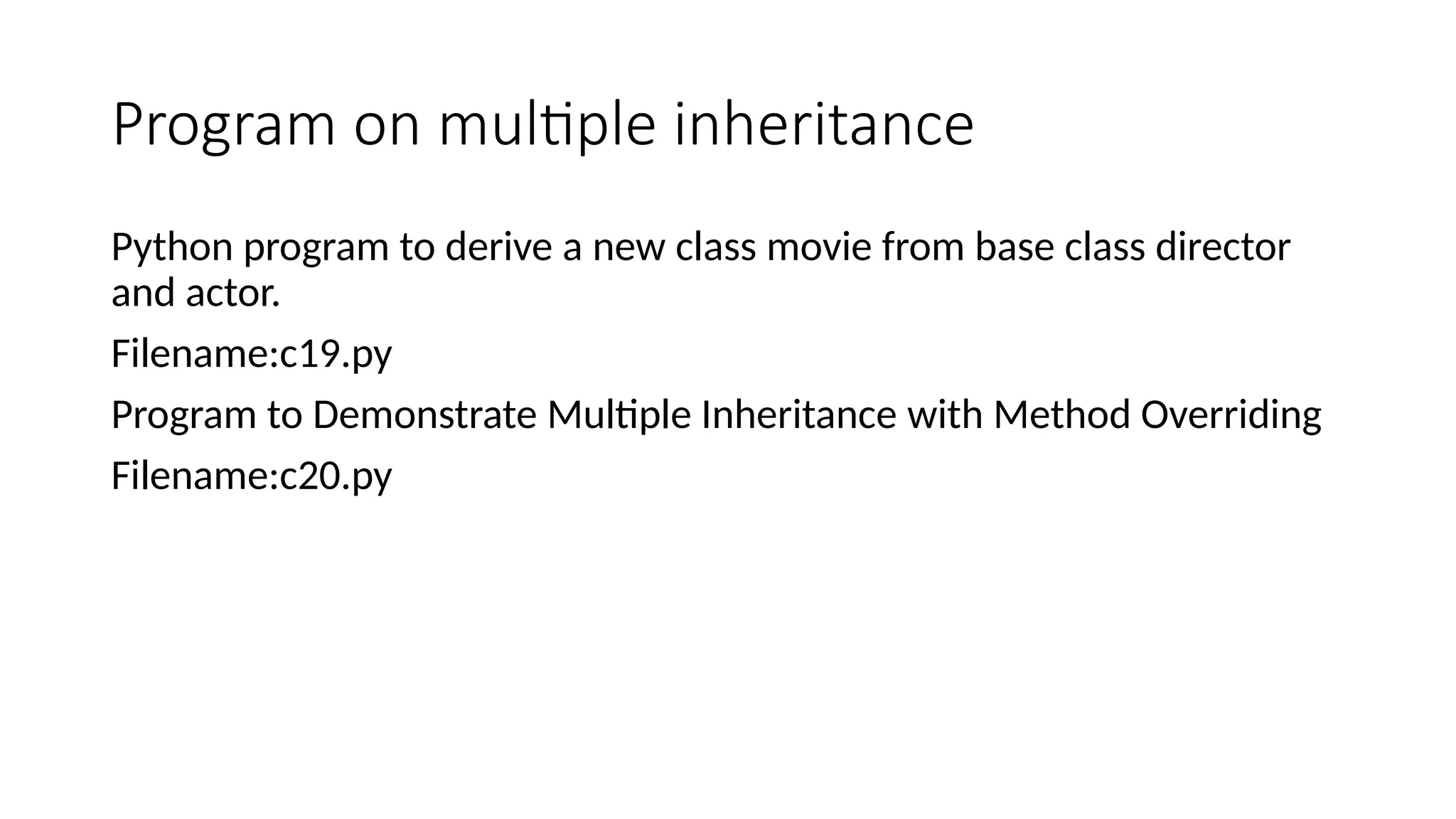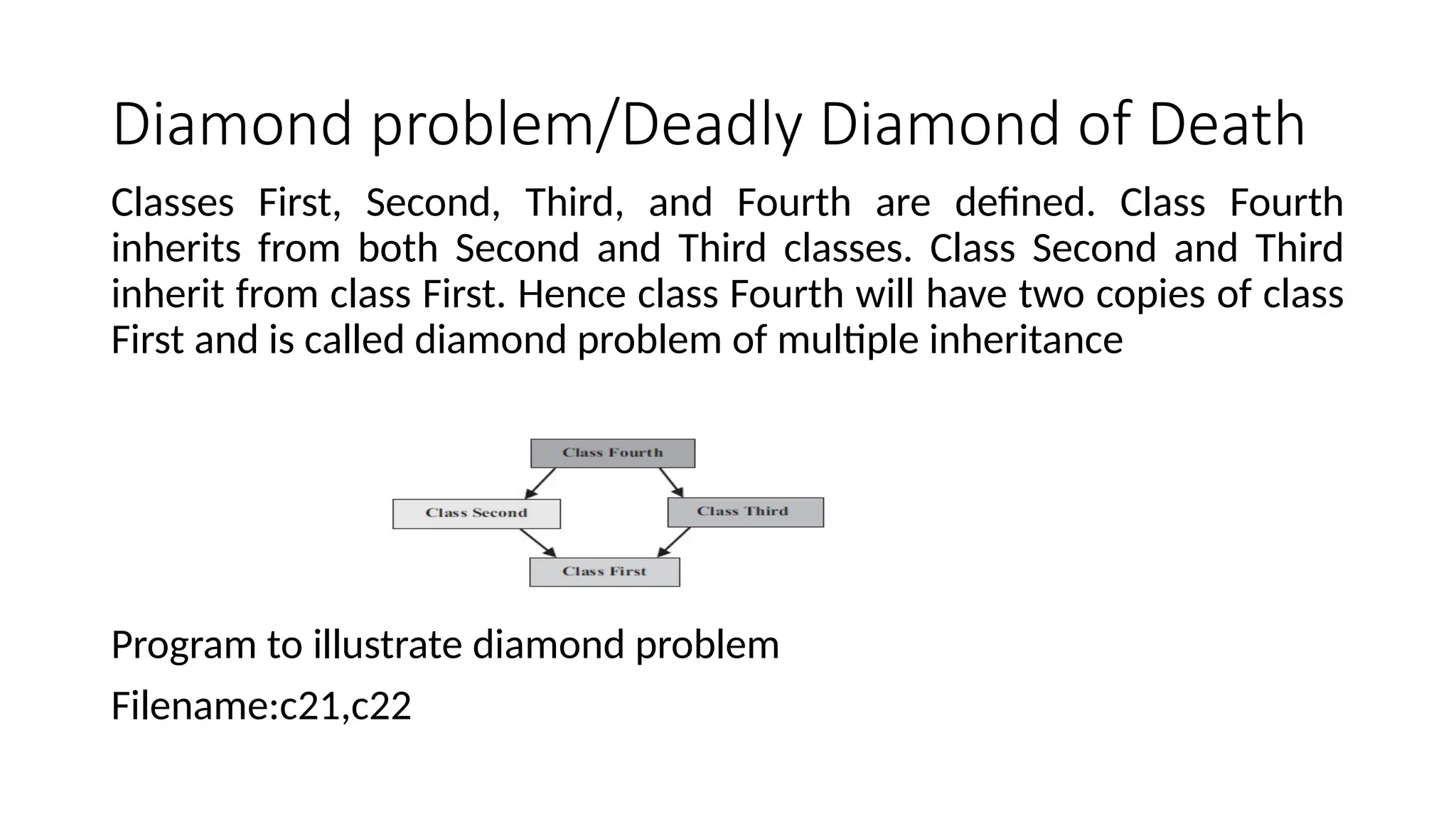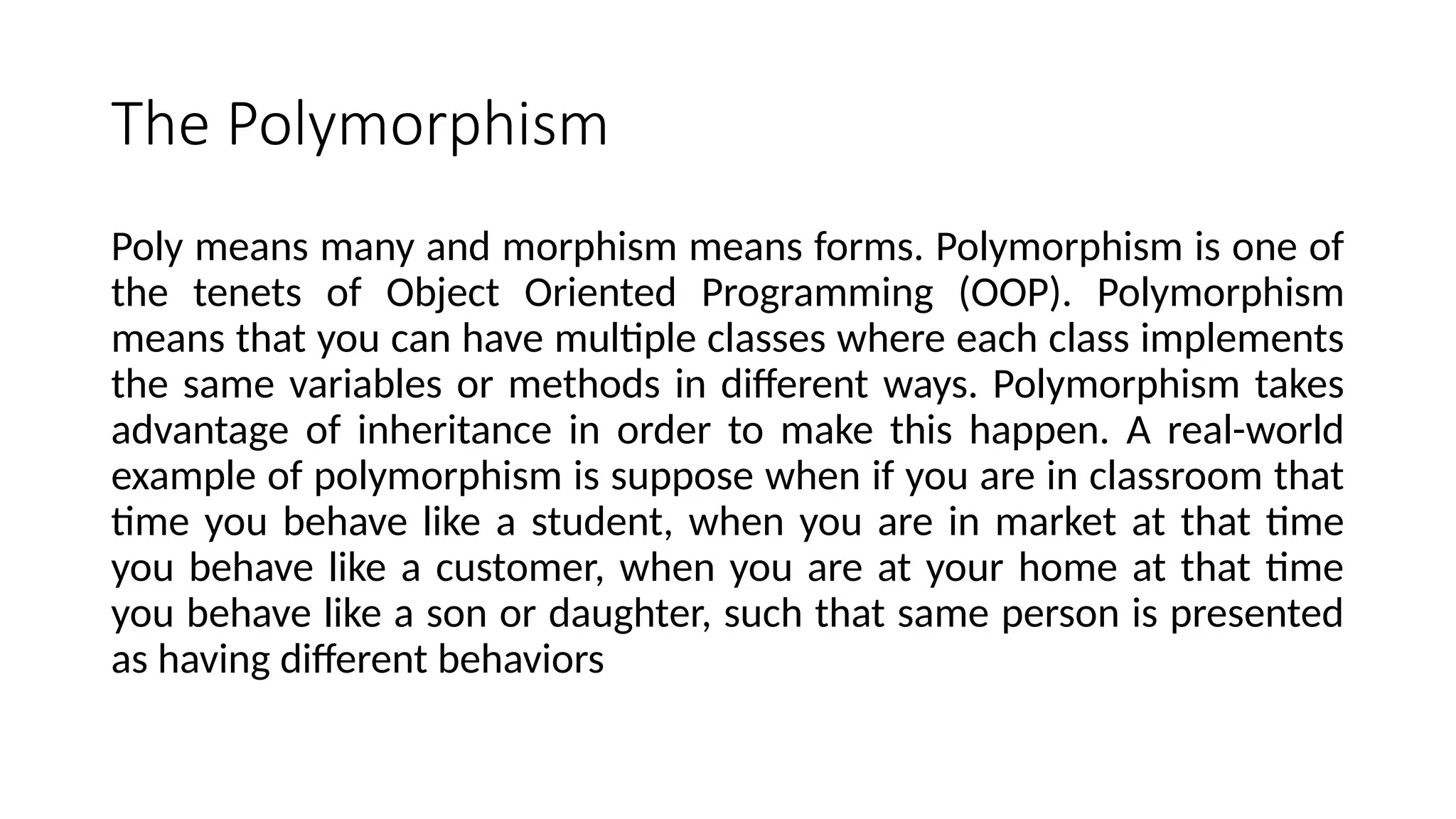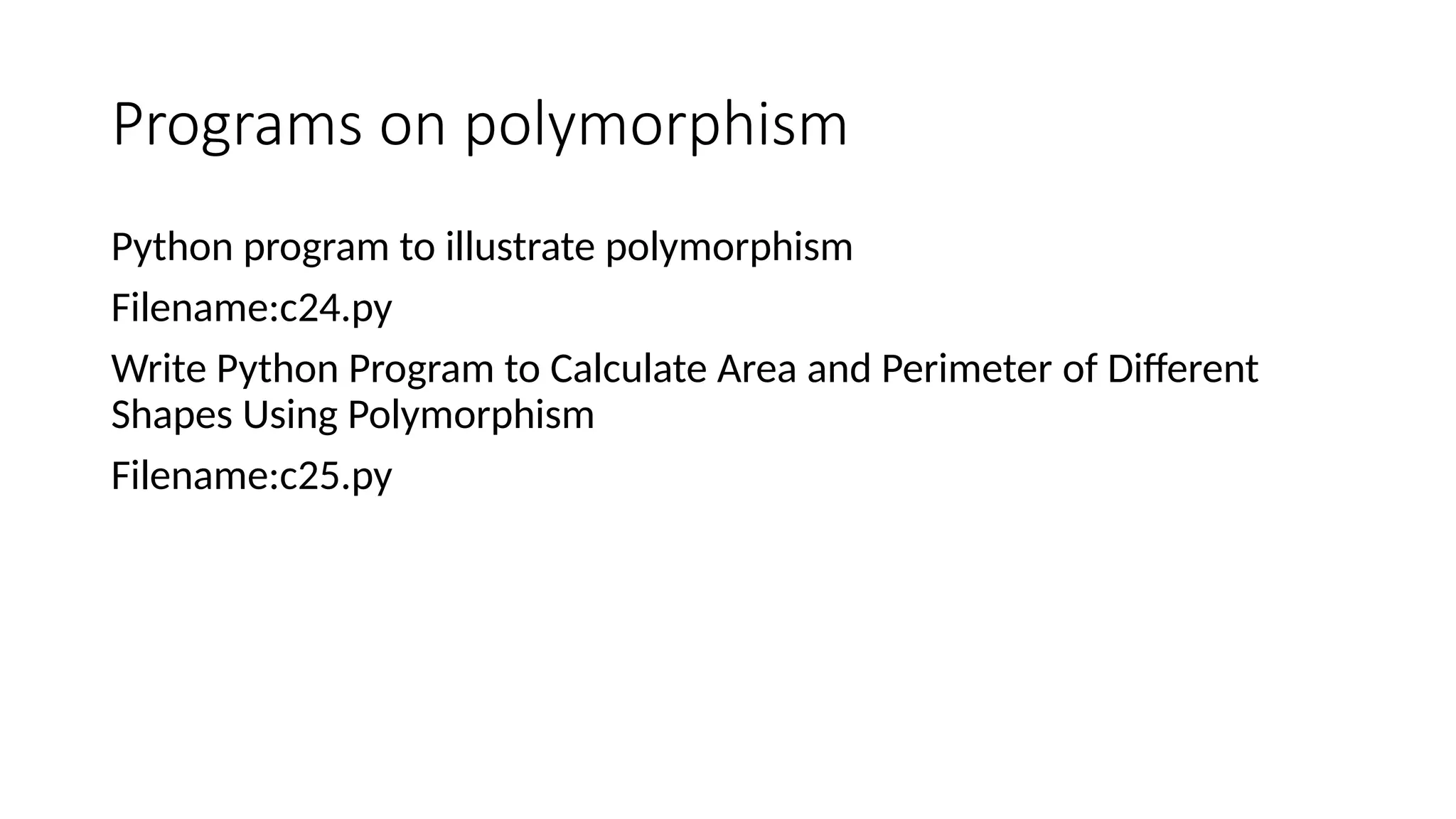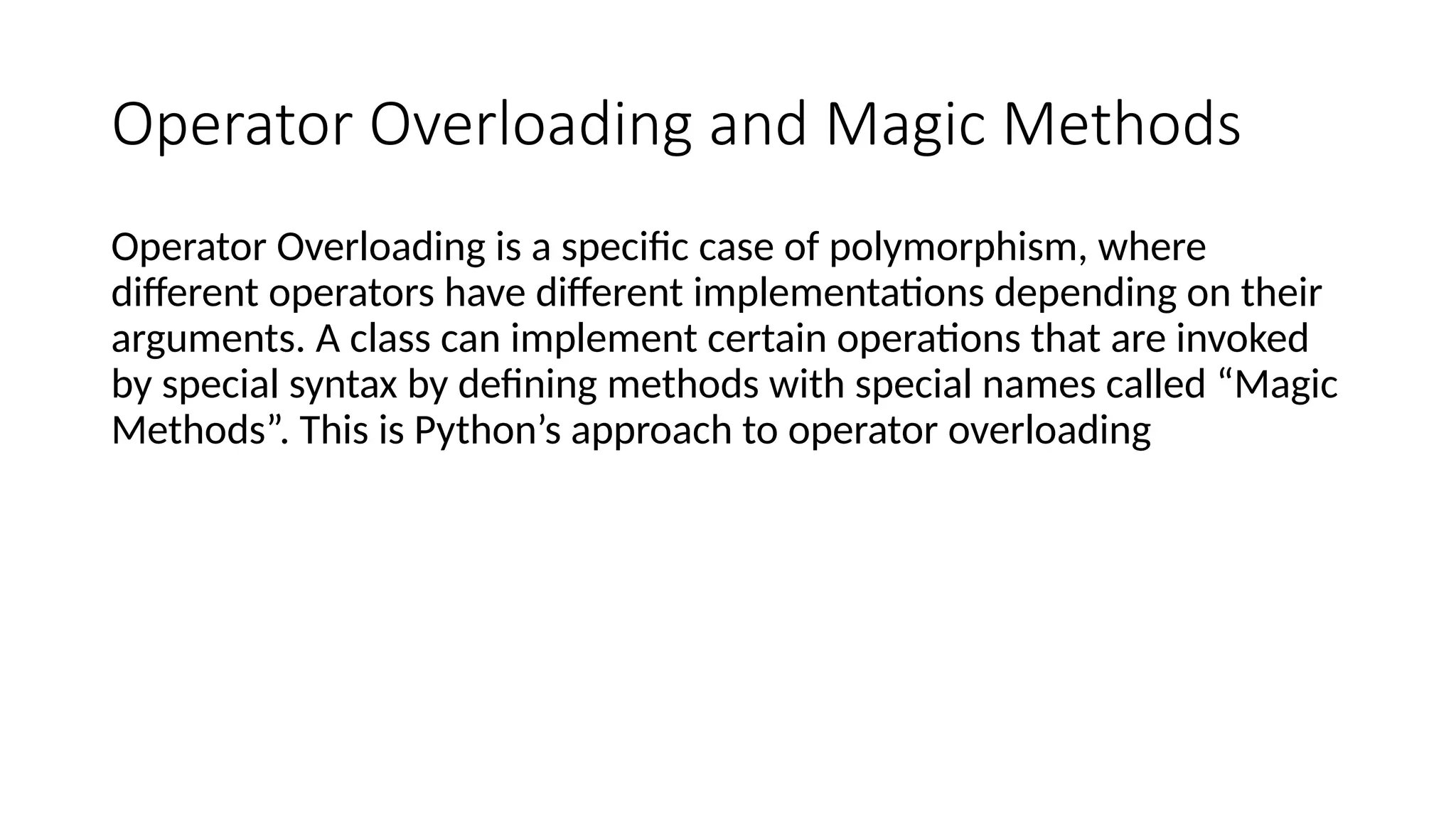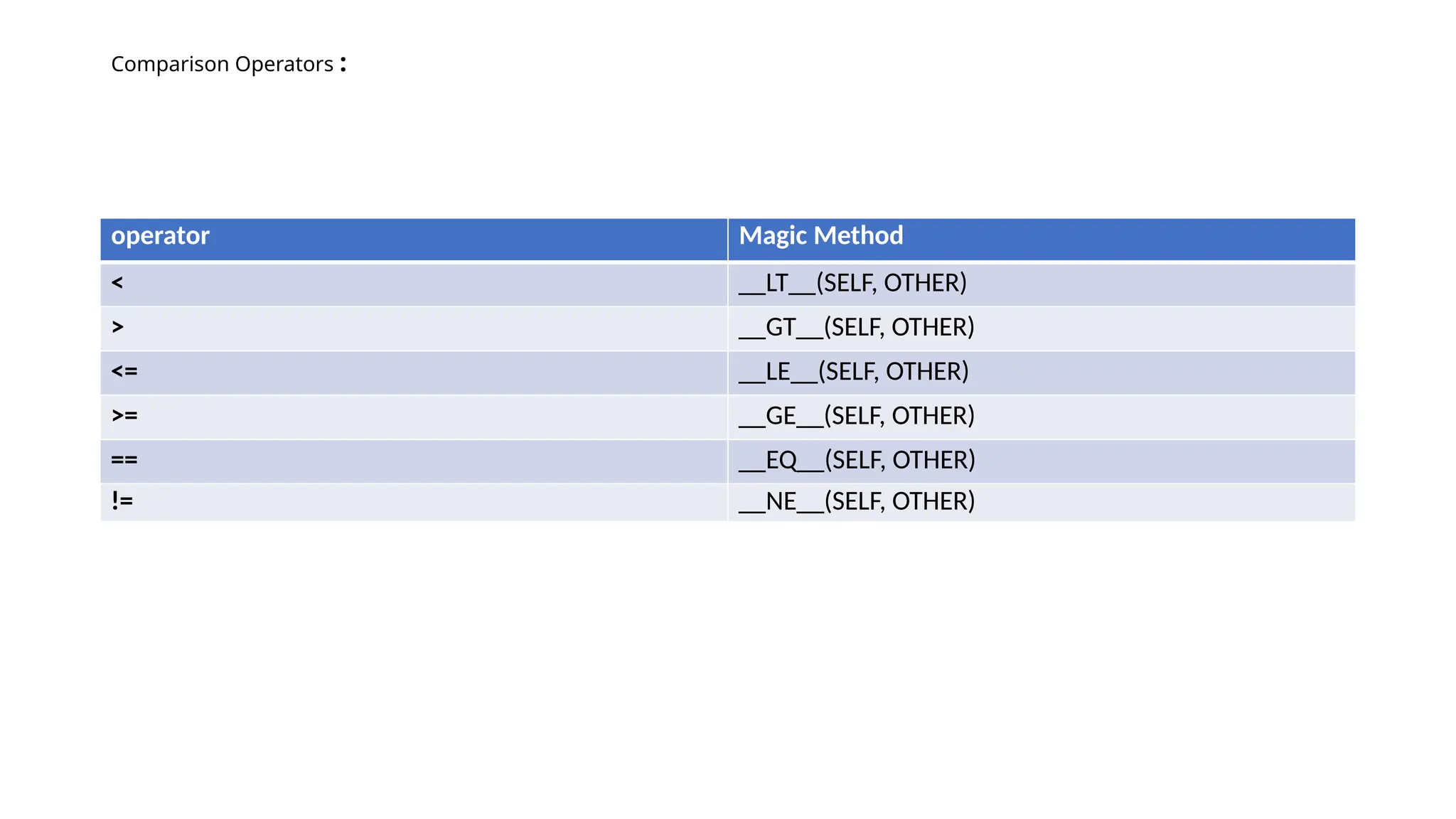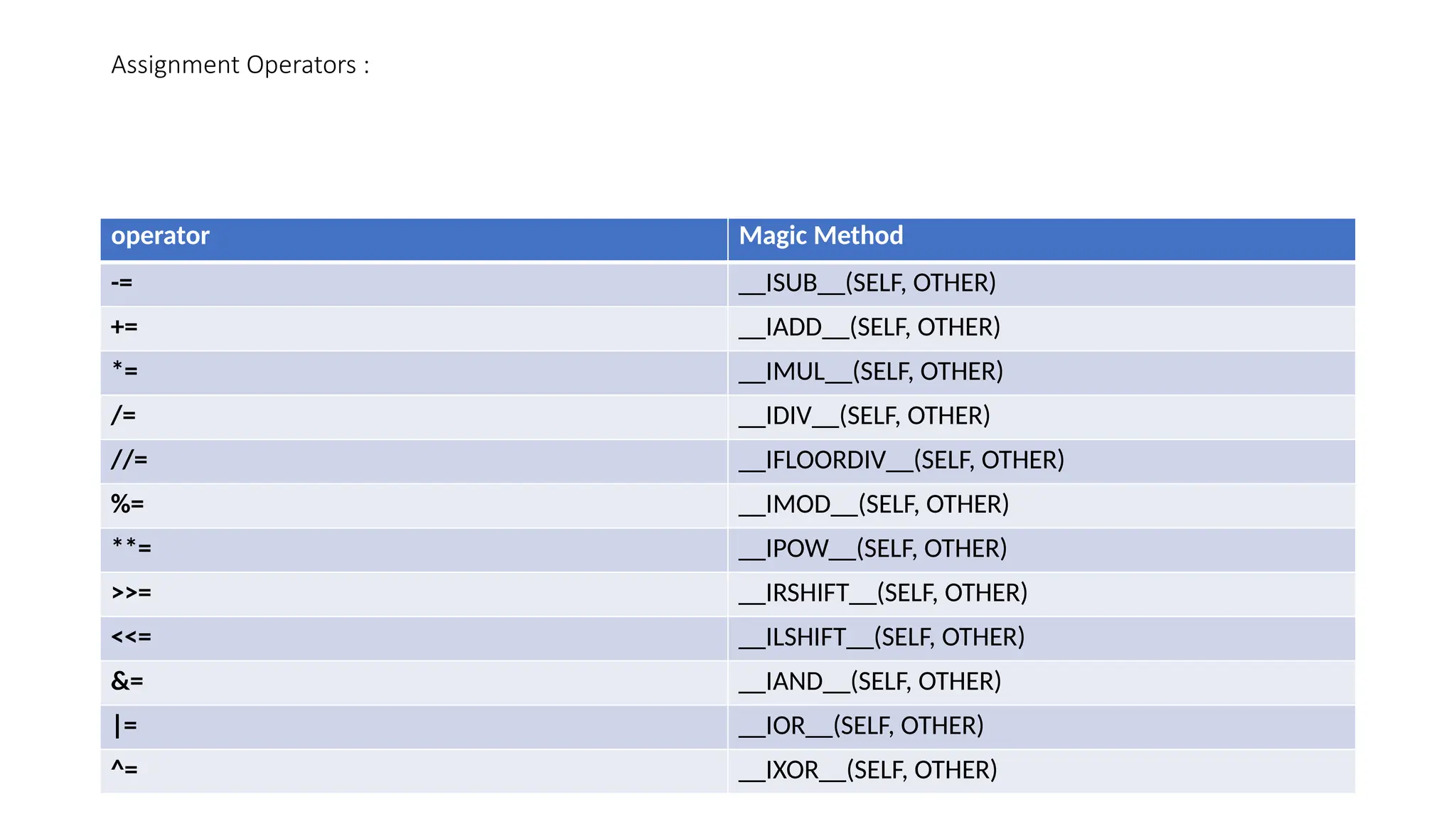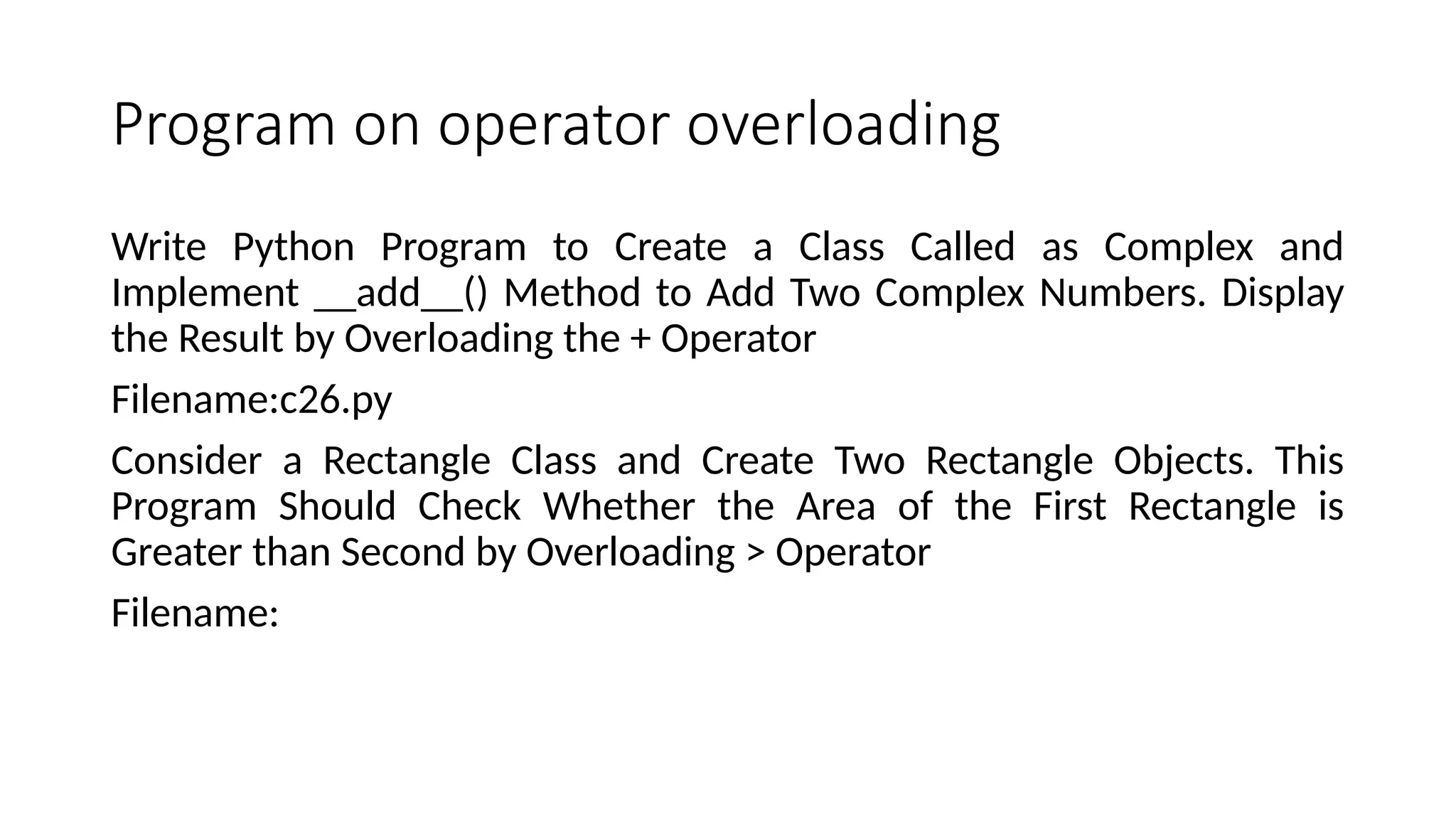The document provides an overview of object-oriented programming concepts, including classes, objects, encapsulation, inheritance, polymorphism, and operator overloading in Python. It explains how to define classes, create objects, implement methods, utilize constructors, and manage visibility of class members. Additionally, it discusses advanced topics such as method resolution order, multiple inheritance, and the implementation of magic methods for operator overloading.


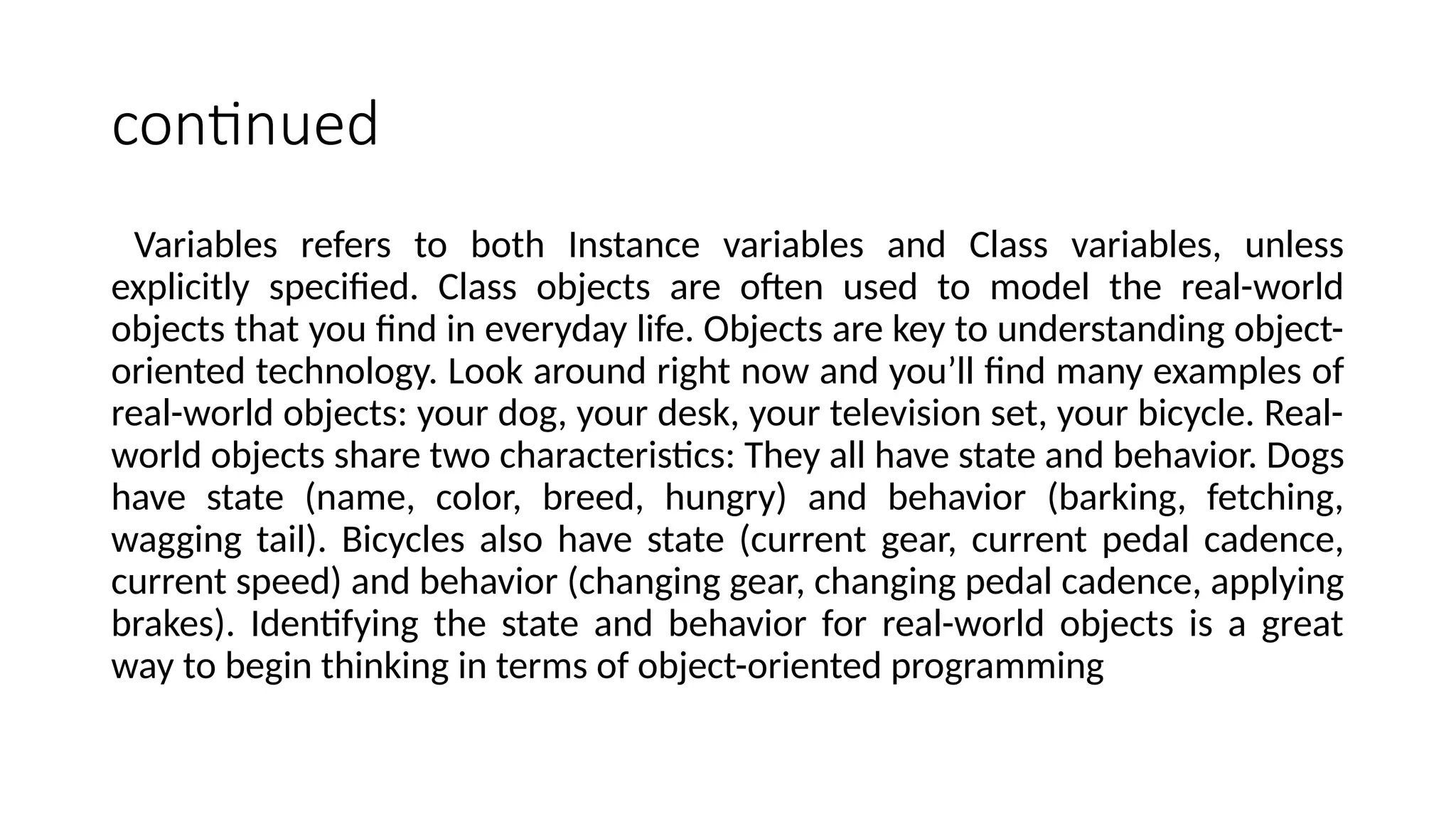


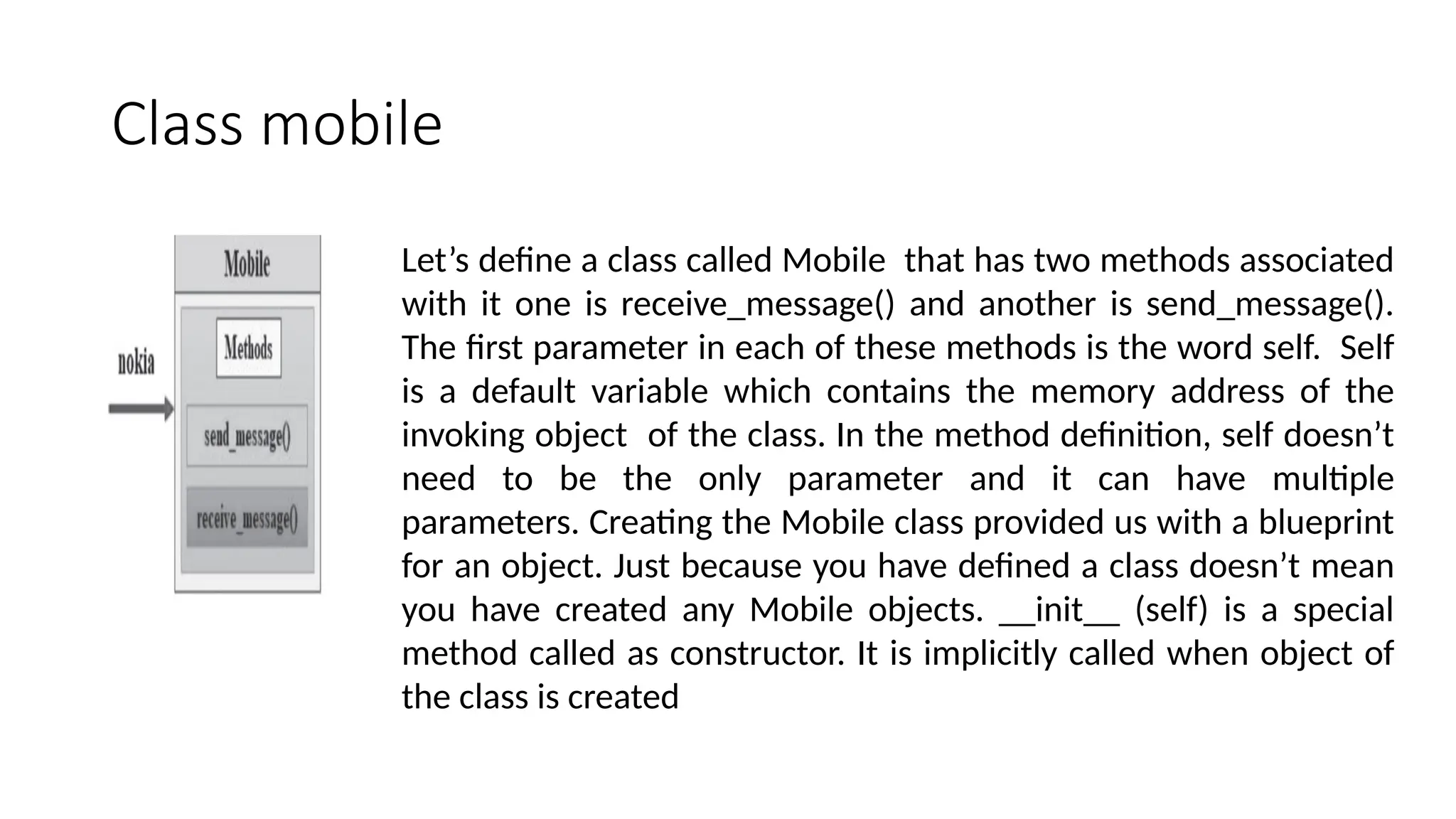
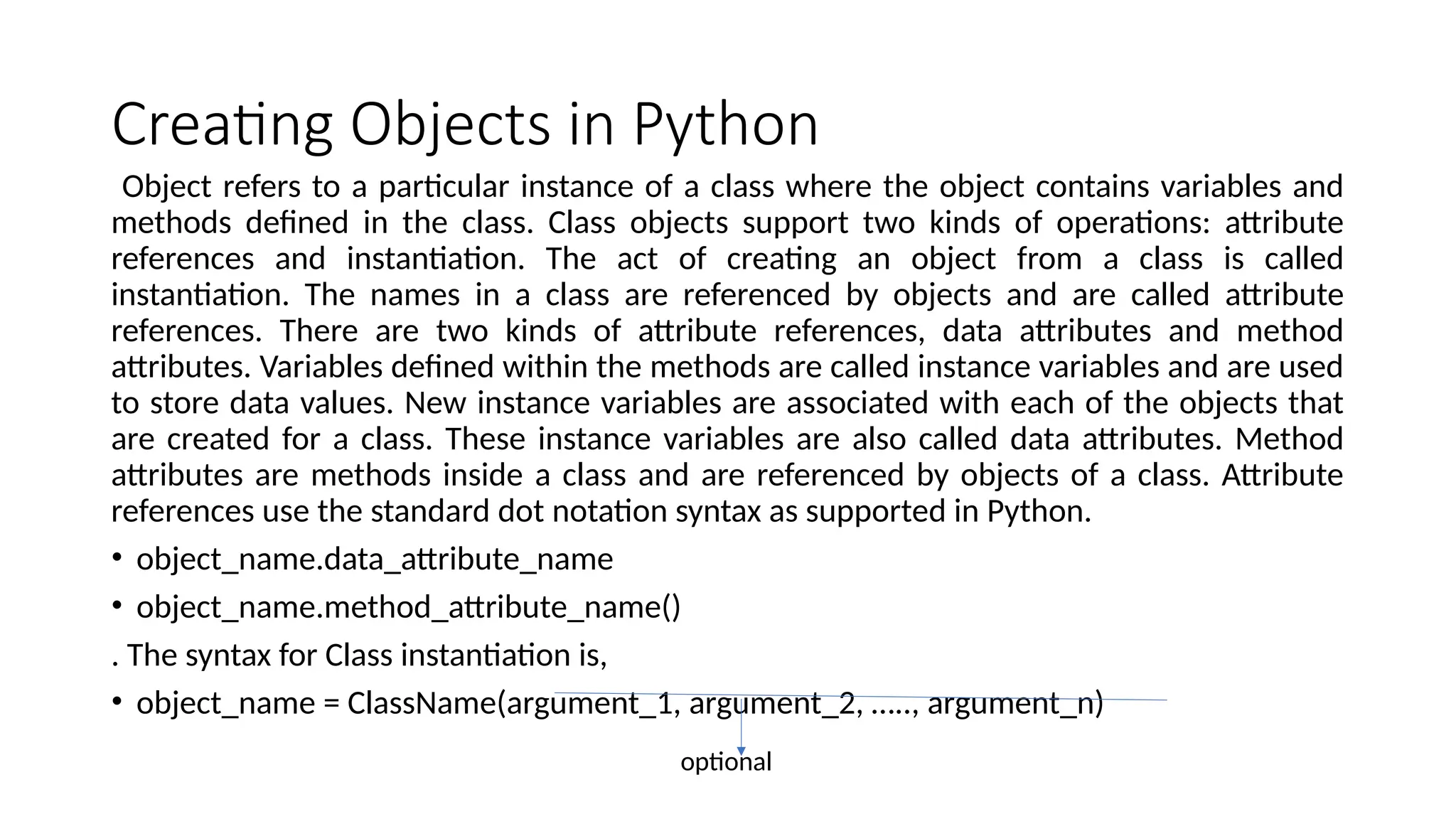


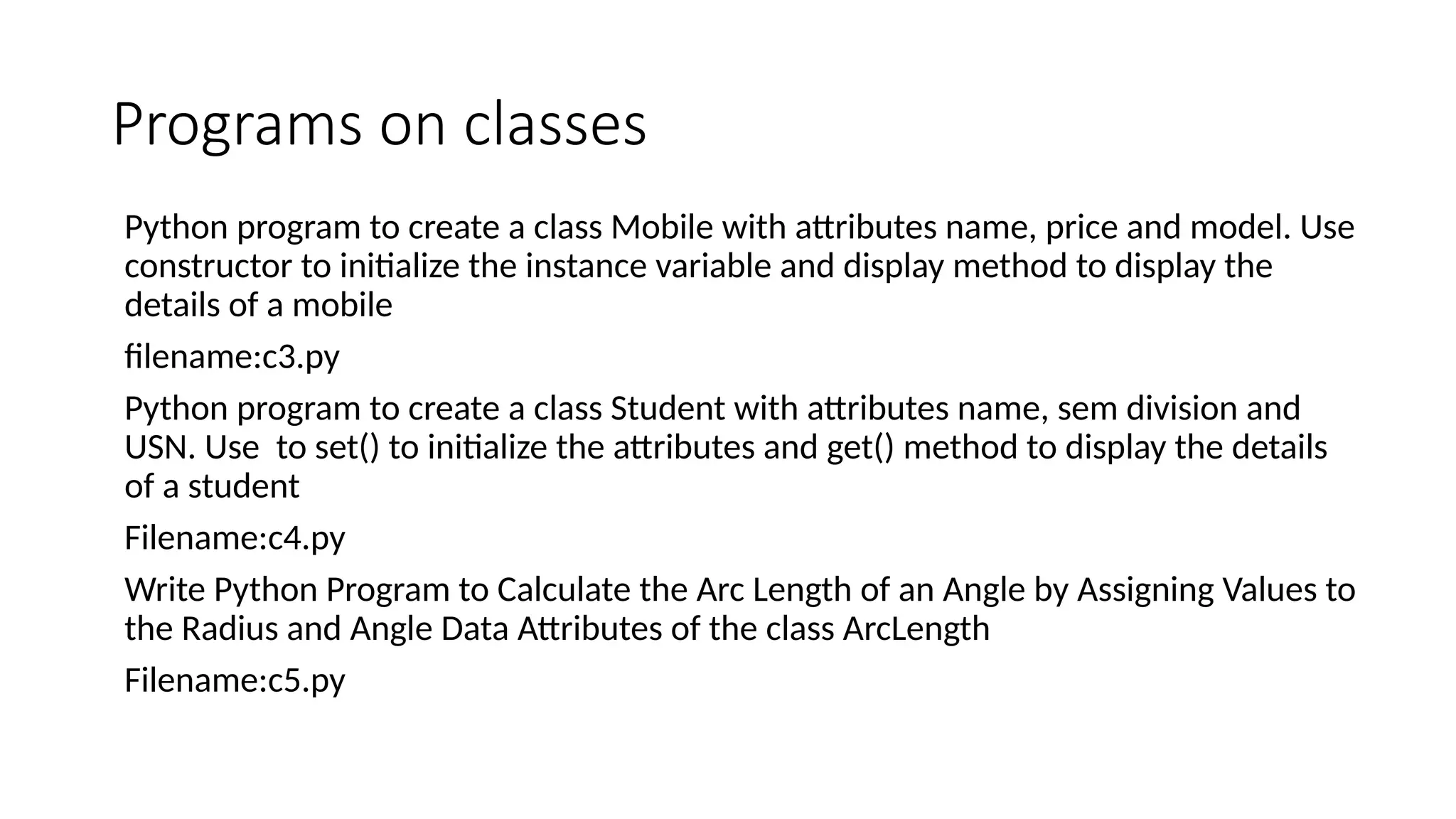



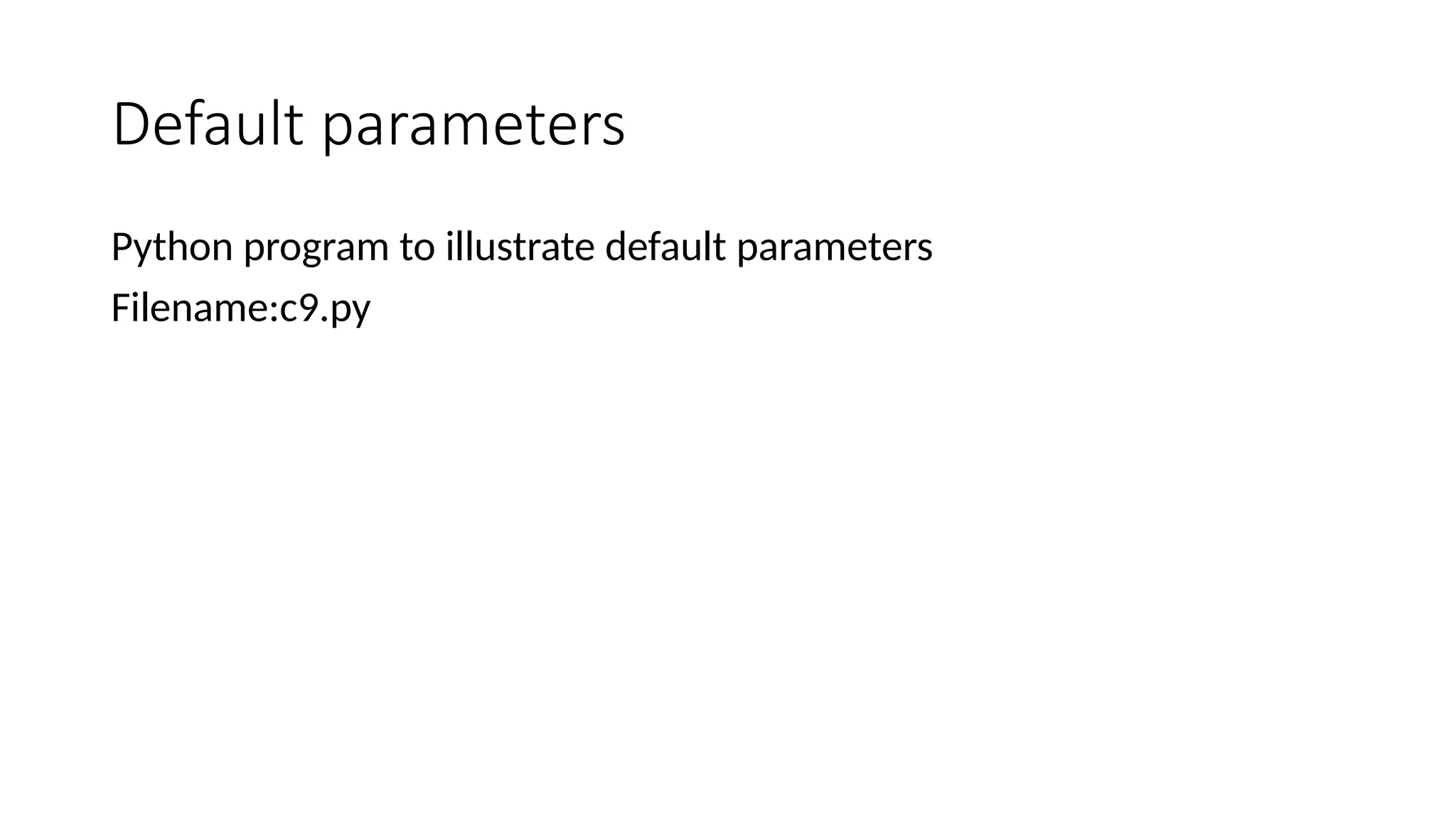
![Using Objects as Arguments An object can be passed to a calling function as an argument Python Program to Demonstrate Passing of an Object as an Argument to a Function Call filename:c10.py Given Three Points (x1, y1), (x2, y2) and (x3, y3), Write a Python Program to Check If they are Collinear using class concept Filename:c11.py Three points lie on the straight line if the area formed by the triangle of these three points is zero. So we will check if the area formed by the triangle is zero or not Formula for area of triangle is : 0.5 * [x1 * (y2 - y3) + x2 * (y3 - y1) + x3 * (y1 - y2)]](https://image.slidesharecdn.com/oops-python-241009034834-016eda3a/75/OOPS-PYTHON-pptx-OOPS-IN-PYTHON-APPLIED-PROGRAMMING-15-2048.jpg)
